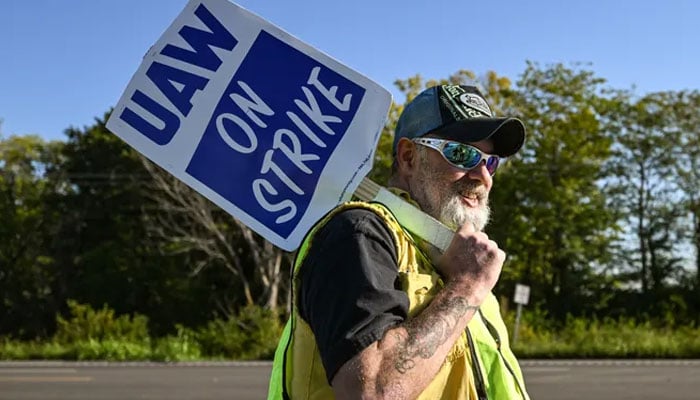The United Auto Workers (UAW) union has initiated a targeted strike at three major auto factories in the United States, bringing production to a halt at Detroit’s “Big Three” for the first time in the US auto industry.
The UAW strike began just after midnight on Friday following failed last-minute negotiations before the contract’s expiration.
Approximately 12,700 workers participated in the UAW strike, which is just a fraction of the 150,000 auto workers represented by the UAW. However, the union has indicated that it may expand the strike if the automakers do not meet their demands.
At the heart of the dispute are issues related to wages and benefits. The UAW is demanding a 40% wage increase, asserting that it’s necessary to align with the substantial rises in CEO pay. Additionally, the union is pushing for equal pay and benefits for junior employees to match those of more experienced workers, who currently receive a top rate of around $32 per hour.
The UAW strike poses a challenge for President Joe Biden, who has been seeking support from organised labor as he gears up for his reelection campaign. The UAW’s decision not to endorse Biden aligns with other leading unions that have already endorsed different candidates.
President Biden recently engaged in discussions with UAW President Shawn Fain and the heads of major automakers to address the ongoing negotiations. However, Fain declined to comment on the specifics of their conversation, stressing that the strike’s primary focus is on the members.
General Motors, Ford, and Stellantis (formerly Chrysler) expressed disappointment with the UAW strike and called for continued negotiations.
General Motors increased its proposed wage increase to 20%, up from the initial 18%, while Stellantis criticised the UAW leadership for not engaging responsibly in reaching a fair agreement.
Ford, which received a counteroffer from the union just four hours before the deadline, expressed its commitment to finding an agreement that benefits employees and supports future investments.
As the strike unfolds, the pressure mounts on all parties involved to find a resolution that addresses the concerns of the UAW members while ensuring the continued stability of the US auto industry.


